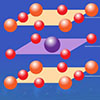| Nov 16, 2021 |
|
(Nanowerk News) Perovskites are semiconducting materials that are a promising alternative to silicon for use in electronics.
|
|
In a new study (“Nature of the surface space charge layer on undoped SrTiO3 (001)”), researchers highlight how fabrication of thin films of a particular perovskite in different environments leads to altered electronic properties. This flexibility allows for the development of films with tunable electronic properties, opening doors to a wide variety of next generation electronic devices.
|
 |
| Image: GIST (click on image to enlarge)
|
|
As our lifestyles become ingrained in flexible electronics, smart devices, artificial intelligence, the internet of things, etc., high performance, electronic components that can perform high speed data collection, processing, and execution become a necessity.
|
|
Certain perovskites are crystal structures that can be promising alternatives to silicon-based components for these next generation electronic applications. Their cubic-like lattice makes them ideal for use as a base for growing oxide films to form heterostructures with unique electrical properties.
|
|
The properties of these heterostructures depend on the charge transfer in the interfacial layer between the perovskite substrate and oxide overlayer. This charge transfer can be manipulated via either doping or through the fabrication process.
|
|
Now, researchers from Korea, led by Prof. Bongjin Simon Mun from Gwangju Institute of Science and Technology, use ambient pressure X-ray photoelectron spectroscopy (AP-XPS) and low energy electron diffraction (LEED) to investigate how fabrication conditions (annealing in an oxygen-rich environment and an oxygen deficit, low-pressure environment) for a particular perovskite material, SrTiO3 – one of the most popular substrates for growing oxide films—affects its undoped surface and the resulting interfacial layer of the heterostructure.
|
|
By using an undoped surface, the researchers examined the changes that occur on the surface of the substrate without interference from the dopants.
|


